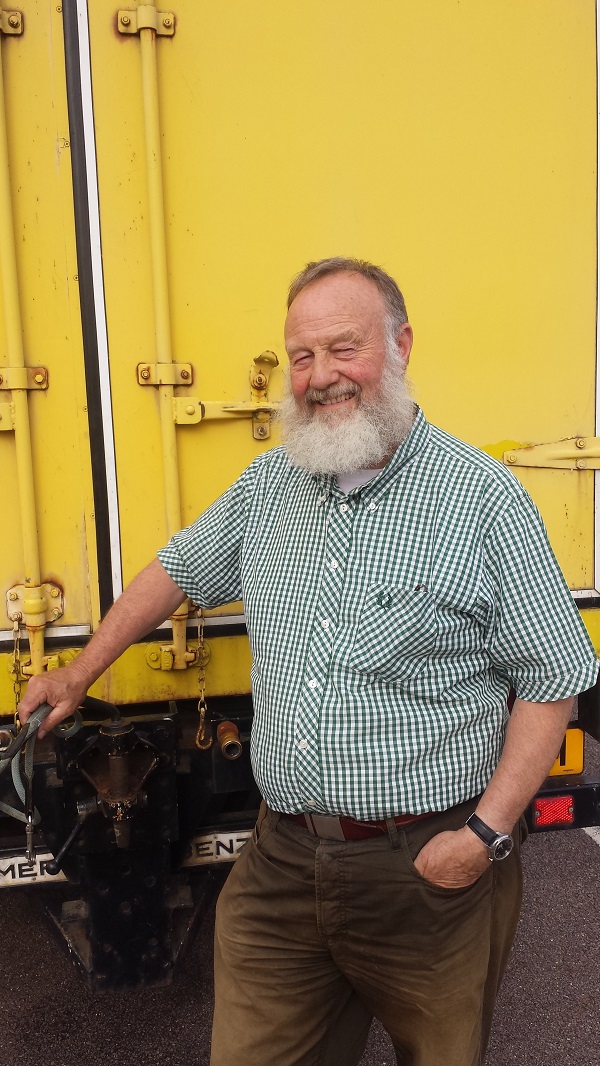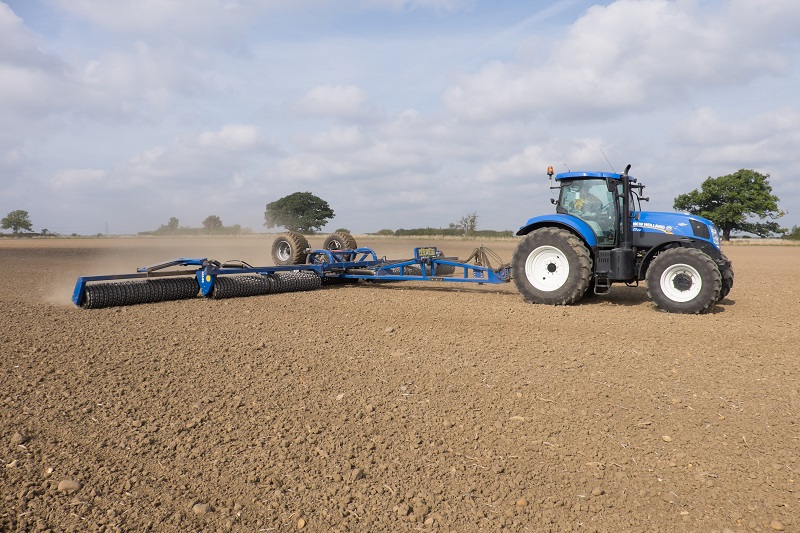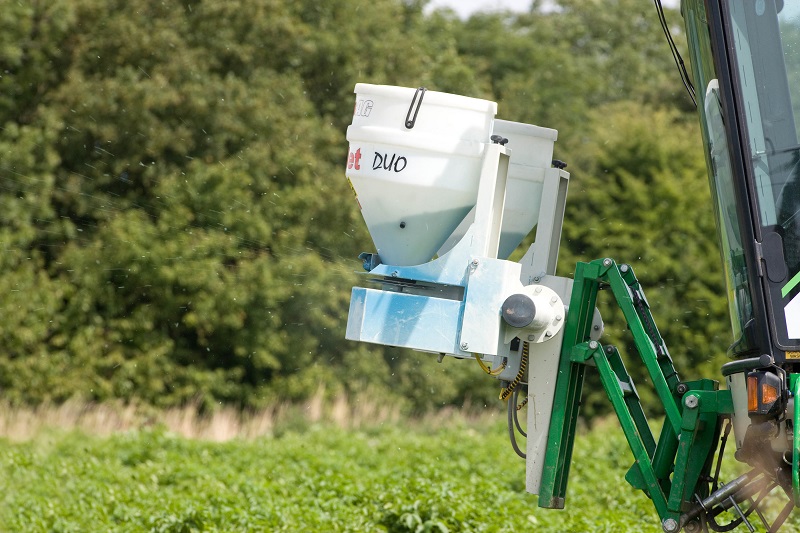Water stewardship is something growers have been living with for many years and, in many ways, it’s one of agriculture’s big success stories. CPM discovers how farmers are adapting.
We understand the problems water companies face and they recognise the difficulties growers have.
By Lucy de la Pasture
Eight years on and metaldehyde is still available, contrary to many expectations. Whatever the ultimate outcome for the active, there’s a cross-industry effort to manage a problem that can only benefit the industry in the long term, believes South Herts Procam agronomist, Tom Scotson.
“The water and agricultural industries are more joined up, having forged strong links over the past few years where previously no dialogue existed. To many farmers, stewardship used to represent a way to avoid the inevitable for as long as possible.
“But now there’s a better relationship – we understand the problems water companies face meeting their obligation to provide wholesome drinking water and they recognise the difficulties growers have producing crops,” he says.
Closer relationship
He admits that his active involvement in one of the smaller catchments, Mimmshall Brook, probably allows him to

The water and agricultural industries have become more joined up in their approach, reckons Tom Scotson.
see more clearly the advantages of this closer relationship. The catchment has nine growers farming land at ‘high risk’ and cooperation in a catchment management pilot scheme has been across the board.
Under the pilot, growers were asked to voluntarily use ferric phosphate instead of metaldehyde on some of their land feeding into the catchment. A risk assessment focusing on the three factors – slope, soil type and proximity to a stream –was used to categorise the land on each holding to map the highest risk areas.
“It was really a first stab at trying to come up with a system to work out where metaldehyde was at most risk of getting into water. The mapping often split fields and in practice, growers applied ferric phosphate to the whole field rather than mess about with two products,” explains Tom Scotson.
“It’s a bit like a volume button on the radio – the ‘risk’ depends where the settings are on the programme so it’s a wiser approach to resort to ferric phosphate on any fields that are at all risky.”
One of the things stewardship has done is make everyone think about slug control and practices have changed as a result, believes Tom Scotson. “We’re using Deter (clothianidin) seed treatment as a first line defence against slug attack as a result of the pilot and it’s replacing a fair bit of metaldehyde.”
And it’s a strategy the majority of his growers are using on their winter wheat for early slug defence as well as BYDV protection. “When seed is Deter dressed, a follow-up application of slug pellets isn’t always needed and certainly isn’t made prophylactically anymore on wheat crops,” he adds.

A greater emphasis on cultural control, making sure seedbeds are good and consolidated helps to limit slug damage.
Alistair White, of B W Field and Partners, is one of Tom Scotson’s clients farming 470ha of combinable crops in the Mimmshall Brook catchment. With predominantly winter cropping (OSR, wheat, barley, oats) on heavy London clay, he says he always has slug issues to deal with but is now managing them very differently.
“We’ve always treated slugs reactively, using bait traps and monitoring before applying pellets only when they’re needed and that hasn’t changed. But we now have more emphasis on cultural control, making sure seedbeds are good and consolidated all helps to limit slug damage,” he says.
Another thing that’s changed in his slug management is targeting the different products to fields. “We’d never used ferric phosphate until the start of the pilot in the Mimmshall Brook catchment but we’re now using it as well as metaldehyde on the rest of the farm. Any headlands next to watercourses get ferric phosphate but we’re still using cheaper metaldehyde where we can.”
Alistair White qualifies this by pointing out that the pricing of ferric phosphate is very similar to the more premium, wet-processed metaldehyde products, so cost isn’t a major factor in product choice if conditions turn wetter and a more durable pellet is needed.
“Since the pilot started, we’ve used three different types of ferric phosphate and found the new wet-processed pellet from De Sangosse, Ironmax Pro, proved to be very durable under the wet conditions we had last autumn,” he says.
James Green manages 2600 ha for the Conant Farming Company in Rutland, Lincs, Northants and Leics. This
autumn the company are participating in the Anglian Water scheme, Slug It Out, which includes land draining into the reservoir and via the River Gwash.
First launched in 2015, the Slug It Out trial area removed an estimated 1613kg of metaldehyde from the farmed landscape, bringing the average levels in reservoir tributaries down by 60%, according to Anglian Water. This season, the trial has been extended to Rutland, effectively doubling its acreage.
“Under the scheme we’re asked to make a wholescale switch to ferric phosphate from metaldehyde and are recompensed by the water company for doing so.”

James Green participates in Anglian Water’s Slug it Out scheme where growers are asked to switch to ferric phosphate and are recompensed by the water company.
Previously managing land in Essex, James Green was involved in a scheme run by Thames Water in their Pincey Brook catchment.
“We were asked to switch to ferric phosphate on high risk fields and received an incentive to do so. The difficulty was the model used to predict risk, which didn’t always make sense,” he comments. “We had fields next door to one another, same soil type and proximity to a water course, yet one was cited as high risk and the other wasn’t.”
He reckons the Slug It Out campaign is a much better approach. “From our business perspective it’s financially more attractive and for Anglian Water, it should guarantee 100% success if no metaldehyde is used.
“It’s good to hear that Anglian Water are now looking at routinely testing the river, before and after Oakham, to look at the contribution home and garden users are making to metaldehyde levels in water,” he adds.
Former Sprayer Operator of the Year, Iain Robertson, routinely uses Adama’s WaterAware app as a useful sense-check before setting out with the sprayer. He assists with the management of the arable side of Dorset mixed farming business, David Foot and with 1800ha to look after, making the most of spray opportunities is the name of the game, he explains.
The farm agronomy is under the watchful eye of Velcourt but both he and Joe Foot are BASIS qualified, so can react to changing situations and make decisions when needed. “BASIS is something I’d recommend every spray operator and arable manager to do. It’s given me a whole new perspective on crop protection and I already knew the application side of things pretty well,” he says.
Both soil types and topography vary hugely across the holdings; with heavy clays to light chalks and slopes he describes as ‘interesting’. Iain Robertson reckons slugs need to be approached in a similar manner to blackgrass – an integrated approach with a mixture of different actives as part of the strategy.
“We home-save seed and Deter-dress everything,” he says, adding that last season really confirmed the benefit of this approach, for BYDV as well as preventing grain hollowing by slugs.
“It’s important to get a fine, consolidated seedbed because good conditions result in better germination and if the crop gets going well, then there’s less chance of slugs causing damage,” he says.
Variable seed rate drills enable a more precise approach to be taken on the farm, so heavier patches of soil can receive a higher seed rate if soil conditions dictate.
“Slug control is like a puzzle and everything has to fit together to get the best results using the minimum amount of molluscicide. Attention to detail does take a bit of effort to do but does make a difference,” he believes.
Both ferric phosphate and metaldehyde are used on the farm, though metaldehyde is still the product of choice with ferric phosphate targeted at the high risk fields.
Helped dramatically
“Where we applied Sluxx (ferric phosphate) last autumn, it helped dramatically under bad conditions and I felt it gave us extra activity,” he says, adding that 5ha (0.1%) were lost to slug damage over the entire acreage in a season where travel was impossible from 4 Nov to mid Feb.
Wessex Water has a borehole and pumping station on the farm so raw water is heavily monitored. Iain Robertson has found extra peace of mind using a nifty peace of software on his phone.
“I’m using the Water Aware app all the time because it’s simple to use. I consult the app to cross check that I’m doing the right thing and being responsible with water in mind,” he says.
Adama initially produced the Water Aware app as a decision support tool for their products. “We have a large portfolio of OSR herbicides and many are currently on the water targeted list,” explains Ali Bosher, the company’s technical and marketing director.
“UK agriculture has already lost more than 70% of the active substances it had in the early 1990s. Put simply, if we as an industry don’t do more to protect our natural water resources, regulatory pressures will result in farmers facing a future with even fewer active ingredients and significantly restricted weed and pest control options.
“Come 2018, when water companies need to have shown to their regulators that catchment management can work, there could be real changes to the availability of OSR herbicides if changes aren’t made on farm,” she continues.
Water Aware, a smart phone application, forecasts the risk of movement of selected pesticides from soil to water courses; based on prevailing and predicted weather conditions, soil moisture deficit and soil texture. But Iain Robertson finds it useful to check out other products before applying as well.
When it was first launched, the app was a bit ‘clunky’ but Adama has listened to feedback and refined the system, says Ali Bosher. The app uses a smart phone’s GPS to determine the location of a field and produces a default soil type for that location. In the recently released, updated version, it’s now possible to override this data and manually enter your soil type, she explains.
“The whole app has been simplified to make it more user friendly. The password requirement has been removed, it’s no longer necessary to tick all the VI boxes and you can list by all products/same field or same product/different fields. All this means you get a much quicker answer to whether there’s a risk of drains flowing within the next seven days.”
Iain Robertson has been beta testing the new version of the app and says it’s another step forward, particularly the new traffic light system which instantly tells you if it’s good to go. A new feature is #SlugAware, which predicts slug activity, using an algorithm based on factors including soil temperature, humidity, soil moisture deficit, air temperature, wind, cultivation method as well as current and previous crops.
#SlugAware gives growers a low, medium or high threat of slug activity warning in a given 24–72 hour period.
“I’ve been trying to trick the system to find out its limits but haven’t managed to catch it out yet,” he says. “It’s a bold step by Adama to help give growers real time guidance to using metaldehyde responsibly, which is key to retaining metaldehyde in the armoury.”
Herefordshire independent agronomist, David Lines, recommends the app to his customers as a decision support aid. “I like the idea of the app because it’s something all operators can have on their phone to check whether or not they should be applying products to certain fields and it’s certainly the way to go for all slug pellet users,” he says.
In common with many other agronomists, David Lines’ advice is to use meteldehyde early, when conditions are dry and then switch into ferric phosphate later in the autumn if needed or if slug pressure is particularly high.
An ongoing development of the Water Aware app is part of Adama’s aim to give growers more sophisticated advice
so they can adapt to doing things differently, explains Ali Bosher. “The next stage of development will use LIDAR, a Ministry of Defence technology that measures slope, which will add this important risk factor into the equation. Ongoing developments with #SlugAware will also bring previous cropping into the equation.”




